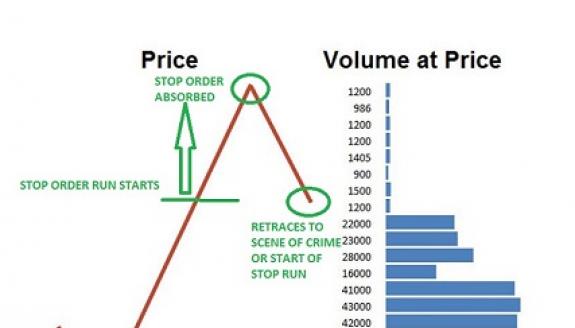
A stock-index future is a cash settled futures contract that is based upon the specific stock market index's value. According to the Bank for International Settlements, the global market for exchange-traded equity index futures was valued at US$130 trillion in 2008.
Futures stocks can be traded via a commodity futures brokerage
Stock index futures look similar to stocks but are not traded in large quantities. Instead, they are contracts that are written on an index or a group of underlying securities. When an arbitrage transaction is made on a stock index futures contract, hundreds or even thousands of trades are made in underlying equities. Stock index futures work in a similar way to stocks, but they have a different pricing structure.

For stock index futures to be profitable, traders must have a minimum account balance as well as meet margin requirements. Some brokerages require a larger account balance, and others require a minimum of 25 percent. Some brokerages require a minimum account balance for futures trading. Others may require more. Margin calls are used by investors when they need more funds. Stock index futures contracts are legally binding.
They are settled in cash
Stock index futures can be settled in cash, and they do not require the delivery of the underlying asset. This is unlike other types of futures contracts. Instead, traders can speculate about the direction of the index by buying and selling futures to profit from price movements. These contracts are usually settled quarterly in March June and September. The contract must have an index that is higher than the contract price to receive payment. During this period, a buyer will receive payment if the index's total value is greater than the initial Margin. A seller will lose his profit if its value drops below the initial Margin amount.
The stock index futures take into account a hypothetical portfolio that represents the index. These futures do not involve actual physical goods. They can be used by investors as a way to hedge against potential falls in their stock portfolio. Stock index futures can be settled in cash but have expiration dates typically less than a calendar year. Investors can therefore expect futures prices to fluctuate which makes them ideal for arbitrage trading.
They are used for hedging
Stock index futures are a popular tool for investors to hedge against market volatility. They can be used as leading indicators, and they are an easy way to adjust market exposure without paying transaction fees. They are popular for speculators who can use them as a tool to speculate on market trends. Popular index futures include the E-mini S&P 500, the Nasdaq-100, and the Dow. Other index futures are available for international markets.

Investors may also choose to hedge their portfolios when they reach certain points in their investment careers. They may want to minimize risk, particularly as they mature and change their views about where the stock market will go. Hedging risk is a good way to do this. Stock index futures can be a great tool to do this. Farmers can use futures to lock down a price for their corn, which can help reduce their risk.
FAQ
Stock marketable security or not?
Stock can be used to invest in company shares. This is done through a brokerage that sells stocks and bonds.
You can also directly invest in individual stocks, or mutual funds. In fact, there are more than 50,000 mutual fund options out there.
There is one major difference between the two: how you make money. Direct investment earns you income from dividends that are paid by the company. Stock trading trades stocks and bonds to make a profit.
In both cases you're buying ownership of a corporation or business. You become a shareholder when you purchase a share of a company and you receive dividends based upon how much it earns.
With stock trading, you can either short-sell (borrow) a share of stock and hope its price drops below your cost, or you can go long-term and hold onto the shares hoping the value increases.
There are three types stock trades: put, call and exchange-traded funds. Call and Put options give you the ability to buy or trade a particular stock at a given price and within a defined time. ETFs, which track a collection of stocks, are very similar to mutual funds.
Stock trading is very popular because investors can participate in the growth of a business without having to manage daily operations.
Stock trading is a complex business that requires planning and a lot of research. However, the rewards can be great if you do it right. To pursue this career, you will need to be familiar with the basics in finance, accounting, economics, and other financial concepts.
How do I choose an investment company that is good?
You should look for one that offers competitive fees, high-quality management, and a diversified portfolio. Commonly, fees are charged depending on the security that you hold in your account. While some companies do not charge any fees for cash holding, others charge a flat fee per annum regardless of how much you deposit. Others charge a percentage based on your total assets.
You also need to know their performance history. Companies with poor performance records might not be right for you. You want to avoid companies with low net asset value (NAV) and those with very volatile NAVs.
You also need to verify their investment philosophy. A company that invests in high-return investments should be open to taking risks. They may not be able meet your expectations if they refuse to take risks.
What is a fund mutual?
Mutual funds are pools that hold money and invest in securities. Mutual funds offer diversification and allow for all types investments to be represented. This helps to reduce risk.
Managers who oversee mutual funds' investment decisions are professionals. Some funds let investors manage their portfolios.
Because they are less complicated and more risky, mutual funds are preferred to individual stocks.
What is an REIT?
A real estate investment trust (REIT) is an entity that owns income-producing properties such as apartment buildings, shopping centers, office buildings, hotels, industrial parks, etc. These companies are publicly traded and pay dividends to shareholders, instead of paying corporate tax.
They are similar to corporations, except that they don't own goods or property.
Statistics
- Our focus on Main Street investors reflects the fact that American households own $38 trillion worth of equities, more than 59 percent of the U.S. equity market either directly or indirectly through mutual funds, retirement accounts, and other investments. (sec.gov)
- For instance, an individual or entity that owns 100,000 shares of a company with one million outstanding shares would have a 10% ownership stake. (investopedia.com)
- The S&P 500 has grown about 10.5% per year since its establishment in the 1920s. (investopedia.com)
- US resident who opens a new IBKR Pro individual or joint account receives a 0.25% rate reduction on margin loans. (nerdwallet.com)
External Links
How To
How to make your trading plan
A trading plan helps you manage your money effectively. It will help you determine how much money is available and your goals.
Before you begin a trading account, you need to think about your goals. You may want to save money or earn interest. Or, you might just wish to spend less. You might want to invest your money in shares and bonds if it's saving you money. If you are earning interest, you might put some in a savings or buy a property. Perhaps you would like to travel or buy something nicer if you have less money.
Once you know what you want to do with your money, you'll need to work out how much you have to start with. This depends on where your home is and whether you have loans or other debts. Also, consider how much money you make each month (or week). Your income is the amount you earn after taxes.
Next, you will need to have enough money saved to pay for your expenses. These include rent, food and travel costs. These expenses add up to your monthly total.
Finally, you'll need to figure out how much you have left over at the end of the month. This is your net discretionary income.
Now you know how to best use your money.
To get started, you can download one on the internet. Or ask someone who knows about investing to show you how to build one.
Here's an example: This simple spreadsheet can be opened in Microsoft Excel.
This graph shows your total income and expenditures so far. It includes your current bank account balance and your investment portfolio.
And here's a second example. A financial planner has designed this one.
It will allow you to calculate the risk that you are able to afford.
Don't try and predict the future. Instead, think about how you can make your money work for you today.